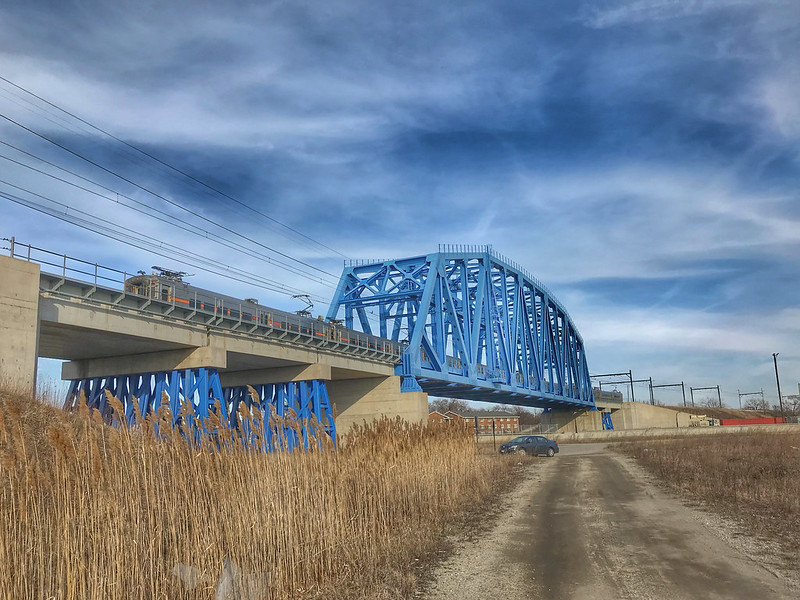Lake Calumet: A vision for bringing back life
25 March 2018
J. and I headed to the Calumet area, specifically Deadstick Pond near Lake Calumet. There’s no public access I can see, and a fence separates the area around Lake Calumet from the frontage road parallel to I-94, Doty Avenue. Collected against the fence is trash — tons of trash. I envision hordes of high school students and adult volunteers spending a few hours a few weekends cleaning up the accumulated trash along the fences at Lake Calumet and Deadstick Pond. The area seems so little traveled that no one may notice, but it’d be a small step toward restoring a semblance of beauty to the area — as long as it isn’t trashed again.
The Calumet area, for many years the center of Chicago’s steel industry, carries an eerie air of a transition zone. Stony Island, a broad, heavily traveled avenue through Hyde Park, South Shore, and other communities, turns into a two-lane, potholed, unmaintained road flanked by tall grasses, nascent parks like Big Marsh, landfills, and the occasional industrial-style building and parking lot. There’s not a house to be seen, nor any sign of a neighborhood.
Eventually, the avenue that further north boasts restaurants, stores, churches, hospitals, and other urban fixtures dwindles down to a cracked, littered pavement that ends abruptly short of a curve of the Calumet River. Traveling down Stony Island can feel like a ride on a time machine toward a future apocalypse, when industry’s mark is visible but faded, and nature is slowly creeping back through the piles of plastic bags and bottles. It’s like the end and beginning of the world.
As J. carefully navigated the potholes, a few cars and trucks sped past at speed — in a hurry to get to who knows where. We stopped on the roadside at Deadstick Pond and peered through the vegetation and fence for a peek at some ducks bobbing along among gray snags. There may have been swans, or plastic bags masquerading as swans.
Next we found Hegewisch Marsh, where he parked by the rail bridge and we wandered down a rough road parallel to the tracks. Many ducks floated on the open water while their passerine counterparts flitted about the bare trees. Along the way I found a lot of scat, most loaded with fur. The open areas connected by the river, rail lines, streets and bridges, along with wildlife-rich marshes, must be coyote havens. I hoped one was following us with its amber eyes as we tread on its territory.



We stopped at Flatfoot Lake in Beaubien Woods, also off I-94, which roars over the otherwise serene setting.


On a satellite map, Lake Calumet, the largest lake within Chicago, looks artificial. I couldn’t guess its original contours. It’s surrounded by nearly empty, decaying streets, the occasional vast building, the ceaseless noise of a busy interstate, and other trappings of modern dreams. There are other dreams, though. The Lake Calumet Vision Committee has a dream for the Calumet region that includes biking, jogging, paddling, and sailing, along with a trail connecting the Pullman National Monument to the young Big Marsh Park — potentially 500 acres of new habitat. It’s going to take time, and it can’t happen fast enough for me.
Now if we could only do something about the roar of I-94.
Source: Raising Parks and Wetlands from Industrial Sites along Lake Calumet

Comments
Lake Calumet: A vision for bringing back life — No Comments
HTML tags allowed in your comment: <a href="" title=""> <abbr title=""> <acronym title=""> <b> <blockquote cite=""> <cite> <code> <del datetime=""> <em> <i> <q cite=""> <s> <strike> <strong>